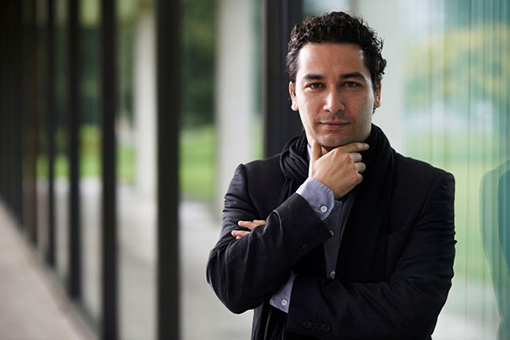With a new contract, Orozco-Estrada leads Houston Symphony in vibrant Beethoven

Andrés Orozco-Estrada conducted the Houston Symphony in an all-Beethoven program Friday night at Jones Hall. Photo: Martin Sigmund
If classical music had a rockstar, it would be Ludwig van Beethoven. The creator of some of the most profoundly human music ever, he speaks to the listener today with a voice still very much alive.
Proof of that was evident Thursday night at Jones Hall in a concert consisting of two Beethoven works, the Sixth and Seventh Symphonies. Andrés Orozco-Estrada conducted the Houston Symphony in a concert completing the Beethoven symphonic cycle begun more than two years ago. That series had begun with the Fifth Symphony, which at the time revealed an interpretive approach that was not yet fully formed. Friday evening’s performance showed musical maturity by conductor and orchestra, and was thrilling in concept and execution.
Beethoven’s “Pastoral” symphony (No. 6) is one of few works for which Beethoven wrote a program. The first movement, “The awakening of cheerful feelings on arriving in the countryside,” begins with a simple tune, and the second, “Scene by a brook” has a melody that flows throughout the movement. The “Merry gathering of the country folk” is a scherzo that alternates between staccato notes and a foot-stomping peasant dance. The stormy fourth section features sounds of rain, thunder and lightning, followed by a hymn of thanksgiving.
The performance by the Houston Symphony, led by Orozco-Estrada, brought the program’s feelings to life. The woodwinds were outstanding in solo parts and beautifully tuned and balanced as a group. Robert Johnson was first-rate in the demanding French horn solos. The Houston Symphony strings played the Pastoral symphony with energy and chamber music sensitivity. The first violins, led by guest concertmaster Richard Lin, were attentive to the smallest details of dynamics and articulation. The second violins, led by guest principal MuChen Hsieh, played with spirit and unanimity.
The second half of the concert was devoted to Beethoven’s Seventh Symphony, described by Richard Wagner as “the apotheosis of dance itself.” Orozco-Estrada chose ideal tempos for conveying the energy and driving pulse of the first, third and fourth movements. The wind section was largely different from the first half, with no change in quality. Amid several excellent woodwind solos, oboist Anne Leek was outstanding with expressive phrasing and tone. William VerMeulen was brilliant in the exceptionally high French horn parts, and Brian Thomas was stellar in the wide-ranging second horn part.
The Allegretto second movement is one of Beethoven’s best-known and beloved pieces. It is, quite literally, the heart of the symphony. A five-note single pitch motif is passed from section to section with a variety of accompaniments. This stoic repeated note figure changes its emotional context with each iteration. A contrasting lyrical middle section in the parallel major key provides relief before returning to the trancelike procession.
This movement was exquisitely shaped and shaded by Orozco-Estrada, resulting in some of the most profound playing from the Houston Symphony to date. Unison violas and cellos had a velvet tone in the opening theme followed by a heartbreakingly touching countersubject. Second violins, first violins, and then winds shared musical empathy in this intimate conversation between loved ones.
It was announced earlier in the day that Orozco-Estrada’s contract as Music Director had been renewed for three years. That news seemed to energize everyone on both sides of the conductor’s podium. While many orchestras are technically proficient, Orozco-Estrada is able to provide the emotional context that makes live classical music accessible and relevant.
The program will be repeated 8 p.m. Saturday and 2:30 p.m. Sunday. houstonsymphony.org